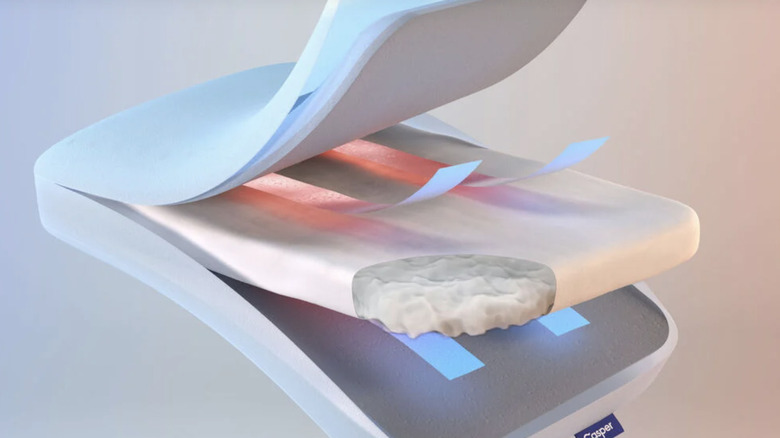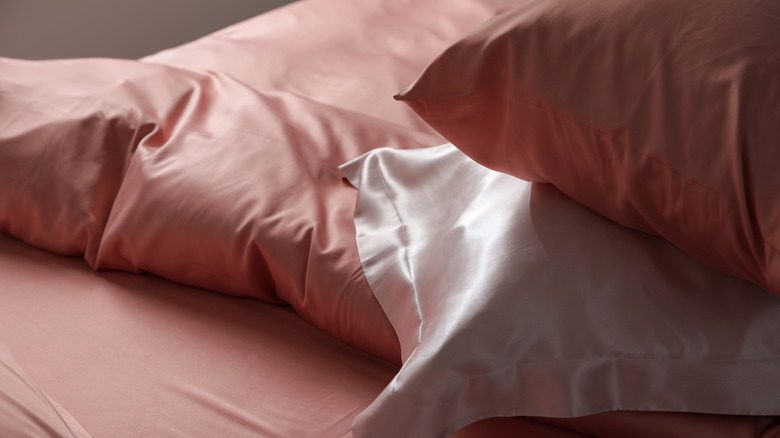Do Cooling Pillows Work Or Are They Blowing Hot Air?
Pillows are no longer just fluffy cushions to rest your head on. As technology advances so, it seems, does the way pillows are made. While the Dreamscape pillow from Shark Tank, which plays music while you sleep to help lull you into a more restful slumber, is just one example, the biggest breakthrough might be related to cooling technology. During the warmer months, despite the air conditioning blasting and fans being at full speed, your pillow still retains your body heat and reflects it back at your head. Flipping it over might offer a brief reprieve, but this only lasts for a few minutes at the most (usually only a few seconds).
Over the years, plenty of companies have tried to sell the dream of a pillow that stays cool throughout the night, but like anything else that sounds too good to be true, people are reluctant to believe it. The question remains: Does cooling bedding actually work, and more specifically, do the pillows? As it turns out, some brands have at the very least found a way to keep pillows temperature-neutral, which is an achievement over body-heated cushions for hours on end, while certain materials like latex and foam can help keep your horizontal head rest fresh all evening too!
Latex and foam materials can create a cooler pillow
The best way to determine if a cooling pillow is actually going to work is by first checking the materials it's made of, particularly the inside. Foam and latex both have what's called an open-celled structure. This means that they have holes throughout which allows air to flow through constantly, introducing cooler temperatures as it does so. Pillows made with down or cotton tend to absorb heat, keeping it trapped in the feathers or fibers so that the structure feels warm no matter how often you flip it over.
Latex and foam are used in cooling pillows because of their breathable design, ensuring heat is released and replaced by cooler air. Latex receives the biggest accolade in the effectiveness category. However, brands like Casper's Hybrid Pillow with Snow Technology ($149) are made with poly-foam and have gel inside to help regulate temperature even more than just standard latex or foam. Memory foam is also frequently touted as offering cooling solutions, so while Casper's highly rated pillow is quite expensive, GhostBed's Memory Foam ($70 at the time of writing) pillow also offers a refreshing sleep for less.
The pillow's exterior casing matters for temperature control too
Another important element of your pillow is the exterior, which notably doesn't mean the cover. The latex and foam, or even the gel, is encased in another layer, which in cooling pillows is usually mesh. This allows the interior to access outside air, because mesh is breathable too. All of the different parts of your pillow have to work together to allow air in and out, so keep that in mind while shopping. One of the best and most accurate ways to determine if a cooling option works is to read the reviews and see what other consumers thought. Trying it for yourself is obviously the only surefire way to know if the pillow really stays chilly consistently, or at least doesn't get hot, but return policies may vary when it comes to your purchase.
Always check the materials in the description or information section online, or check the tags if you're shopping in store. Once you've found a pillow you like, it's important to also find a case that will boost its effects. Materials such as cotton, bamboo, silk, and linen will help enhance your cushion's cooling effects. If you've been on the fence about trying a cooling version, why not take the TikTok test to determine if it's time to replace your pillow, and if it is then take the plunge into a potentially cooler night's sleep?


